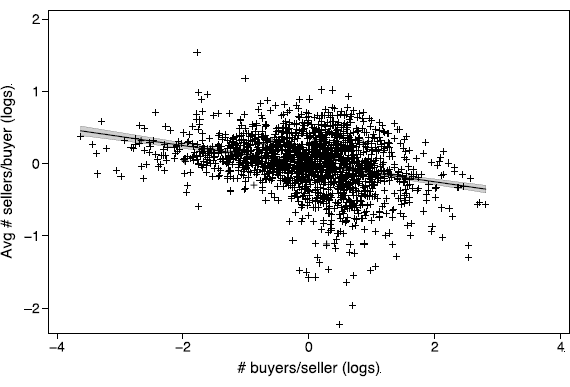| Author Name | Andrew B. BERNARD (Tuck School of Business at Dartmouth) / Andreas MOXNES (University of Oslo) / Karen Helene ULLTVEIT-MOE (University of Oslo) |
|---|---|
| Research Project | Geospatial Networks and Spillover Effects in Inter-organizational Economic Activities |
| Download / Links |
This Non Technical Summary does not constitute part of the above-captioned Discussion Paper but has been prepared for the purpose of providing a bold outline of the paper, based on findings from the analysis for the paper and focusing primarily on their implications for policy. For details of the analysis, read the captioned Discussion Paper. Views expressed in this Non Technical Summary are solely those of the individual author(s), and do not necessarily represent the views of the Research Institute of Economy, Trade and Industry (RIETI).
Regional Economies (FY2011-FY2015)
Geospatial Networks and Spillover Effects in Inter-organizational Economic Activities
Global trade is the sum of millions of transactions between importing and exporting firms. Firms, not countries, trade. While this may seem obvious, the importance of firm-to-firm connections in determining responses to policy and shocks is not well understood. In this paper, we ask how exporters and importers interact and explore the consequences for trade.
Using a new data set on Norwegian trade transactions, we can link a firm's export transactions to specific buyers in all destination countries and, at the same time, examine all the suppliers to Norwegian importing firms. We document a set of stylized facts about importer-exporter connections. The buyer margin explains a large fraction of the variation in aggregate trade, and the distributions of buyers per exporter and exporters per buyer are characterized by many firms with few connections and a few firms with many connections.
Large exporters reach more customers. Perhaps less intuitive is the fact that exporters with many partners have the same distribution of sales across buyers as do those with few customers. Big exporters are big precisely because they have more customers. Larger exporters therefore reach more customers and they also reach a wider range of customers. This leads to negative assortative matching between sellers and buyers: the better connected an exporter is in terms of number of buyers, the less well connected is its average customer in terms of seller contacts. This is shown in Figure 1. The horizontal axis denotes the number of connections per Norwegian exporter while the vertical axis denotes the number of connections for the average customer (demeaned and in logs). The slope is negative, meaning that more connected sellers on average meet with less connected buyers.
Our focus is less on the number of importers than on how the heterogeneity of potential importers across destinations matters for trade flows. While importer heterogeneity exists in every destination, there is substantial variation across markets; Norwegian exports to developed countries are very concentrated in a few buyers while those to lower income countries are less concentrated. We examine how this variation in importer dispersion affects the responsiveness of Norwegian exports to shocks to market access.
In order to export their goods, firms undertake the costly process to find a buyer. We develop a theoretical model with buyer and seller heterogeneity where meeting a buyer requires the exporter to incur some relation specific costs, e.g., due to bureaucratic procedures, contract agreements, and the customization of output to the requirements of particular buyers.
Our model is able to match many of the stylized facts, but it also allows us to generate a set of testable implications about the role of buyer heterogeneity in international trade which are confirmed as we take the model to the data. A key theoretical finding is that buyer-side heterogeneity plays an important role in generating the variation of exports across sellers and in explaining the response of exports to aggregate shocks. The response of firm-level exports to comparable shocks to market access across destinations varies systematically with the dispersion of firm size in the destinations. Specifically, the export response is amplified in destinations with less buyer dispersion.
An implication of our work is therefore that the growth in trade following trade liberalization will depend on these demand side characteristics. Furthermore, our work points to the importance of relation-specific costs, and that trade promotion and other policy instruments may help firms' exports by reducing these types of costs.


